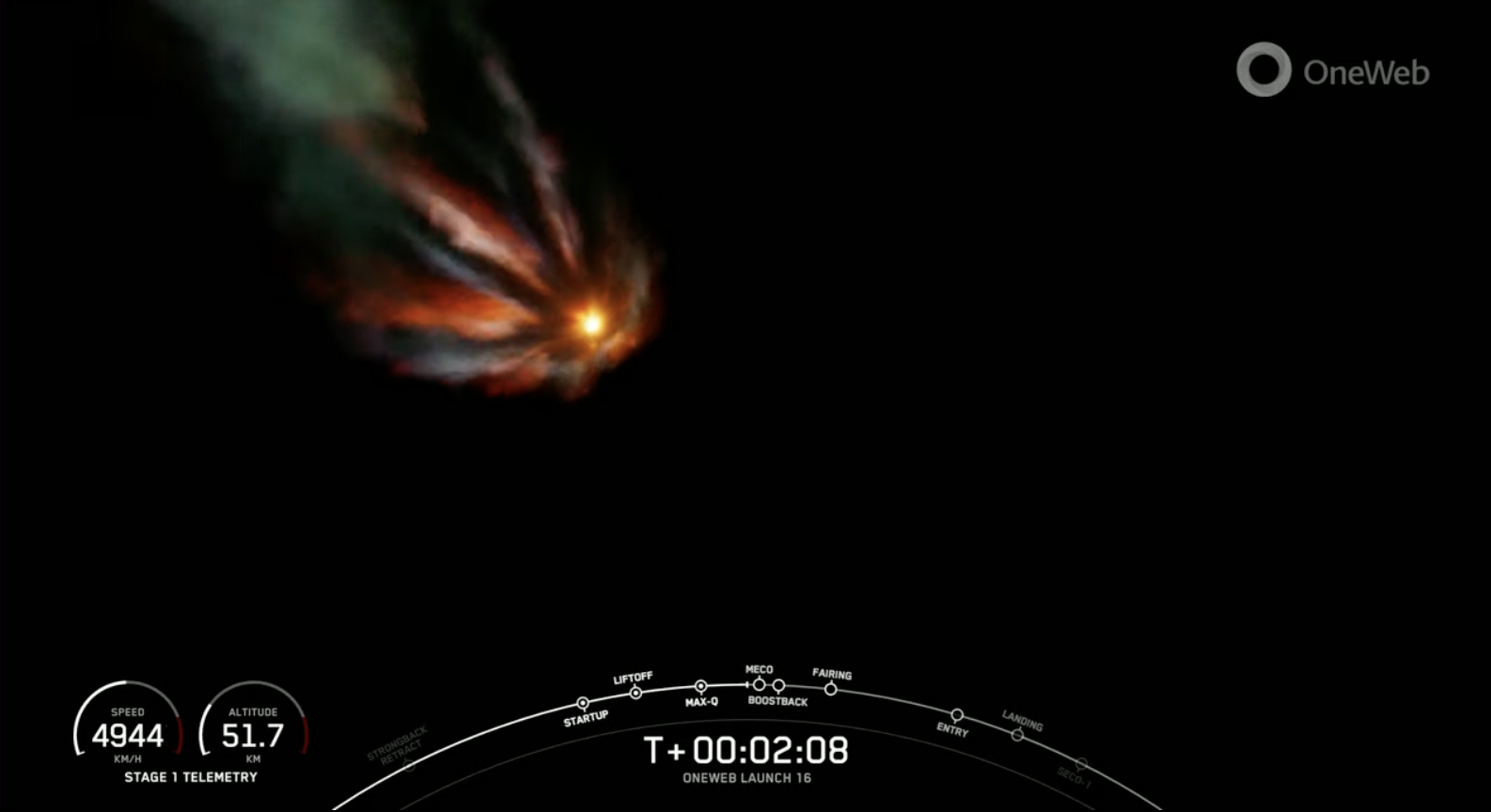
If Elon Musk’s aspiration to fly 100 times in 2023 is to stand any chance of becoming reality, an average of two launches per week will become this year’s requisite norm. And that began to ring true at 11:50 p.m. EST Monday, when the second Falcon 9 of the year roared aloft from storied Space Launch Complex (SLC)-40 at Cape Canaveral Space Force Station, Fla., laden with 40 OneWeb broadband internet satellites, destined for insertion into near-polar orbit. But hopes of launching a second mission from Vandenberg Space Force Base, Calif., a half-hour earlier, came to nought, due to poor weather on the West Coast.
As outlined last night by AmericaSpace, SpaceX planned to launch the brand-new B1075 core from Vandenberg’s Space Launch Complex (SLC)-4E at 8:15 p.m. PST (11:15 p.m. EST) Monday, carrying a batch of 51 Starlink internet communications satellites. The payload “stack” would have been deployed about 29 minutes into the flight, with B1075 wrapping up her first mission with an on-point landing on the deck of the Autonomous Spaceport Drone Ship (ASDS), “Of Course I Still Love You”.
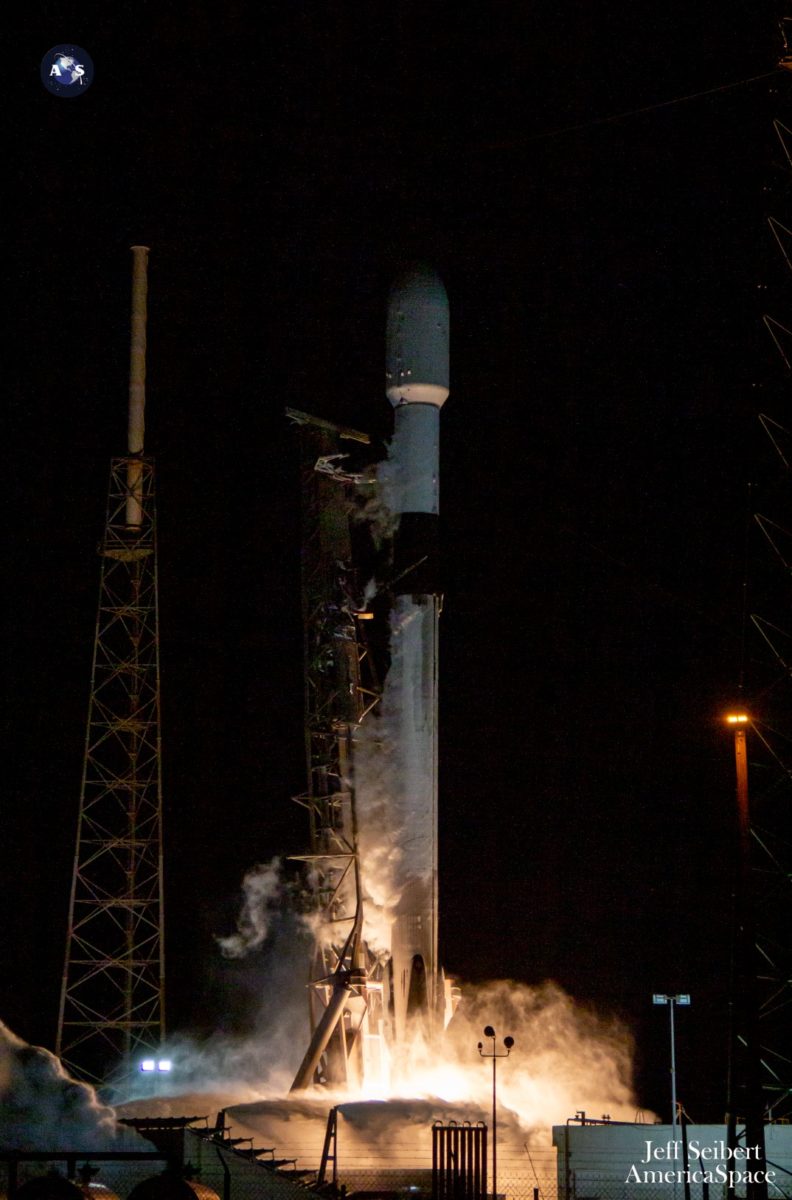
And with the OneWeb launch from the Cape’s SLC-40 scheduled for 11:50 p.m. EST, the result might have been a new record—just 35 minutes—between two Falcon 9 launches, smartly eclipsing SpaceX’s current personal best of seven hours and ten minutes, achieved between a pair of missions last 5 October. But weather conditions at Vandenberg proved highly unfavorable, with SpaceX noting that it was “keeping an eye on weather conditions”, which hovered around 30 percent, as rain lashed the Los Angeles area.
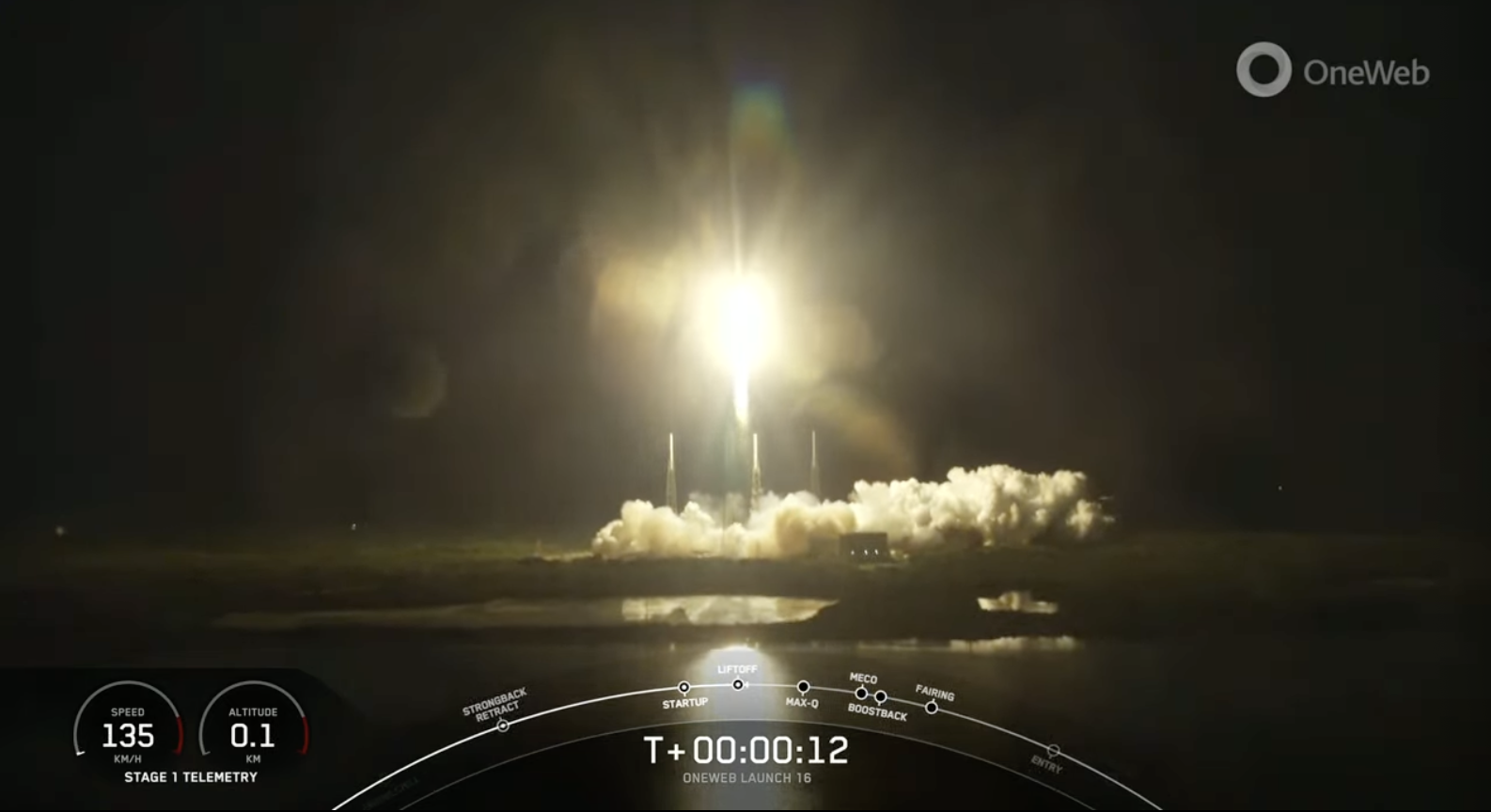
As ever, SpaceX carried its launch preparations down to the wire, initially aiming for a revised T-0 an hour later at 9:35 p.m. PST Monday (12:35 a.m. EST Tuesday), before succumbing to an inevitable scrub. “Standing down from tonight’s Falcon 9’s launch of Starlink, due to unfavorable weather conditions,” the Hawthorne, Calif.-based organization tweeted, adding that teams would realign for a backup T-0 at 8:02 p.m. PST (11:02 p.m. EST) on Tuesday, 10 January.
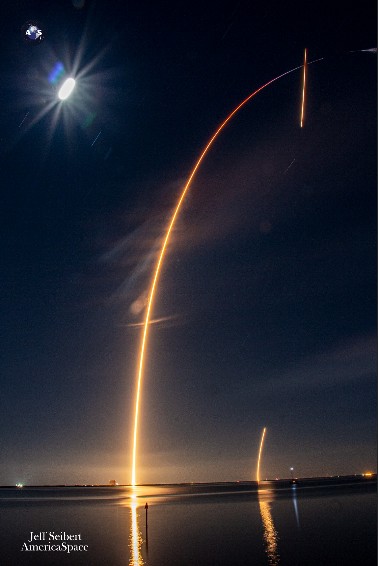
Photo credit Jeff Seibert/AmericaSpace
Over in Florida, conditions could hardly have been more favorable, as weather notched up from 90 to 95 percent. Flying the OneWeb mission was B1076, a once-before-flown Falcon 9 which first saw service late last November to deliver the CRS-26 Cargo Dragon on the first leg of its trek to the International Space Station (ISS).
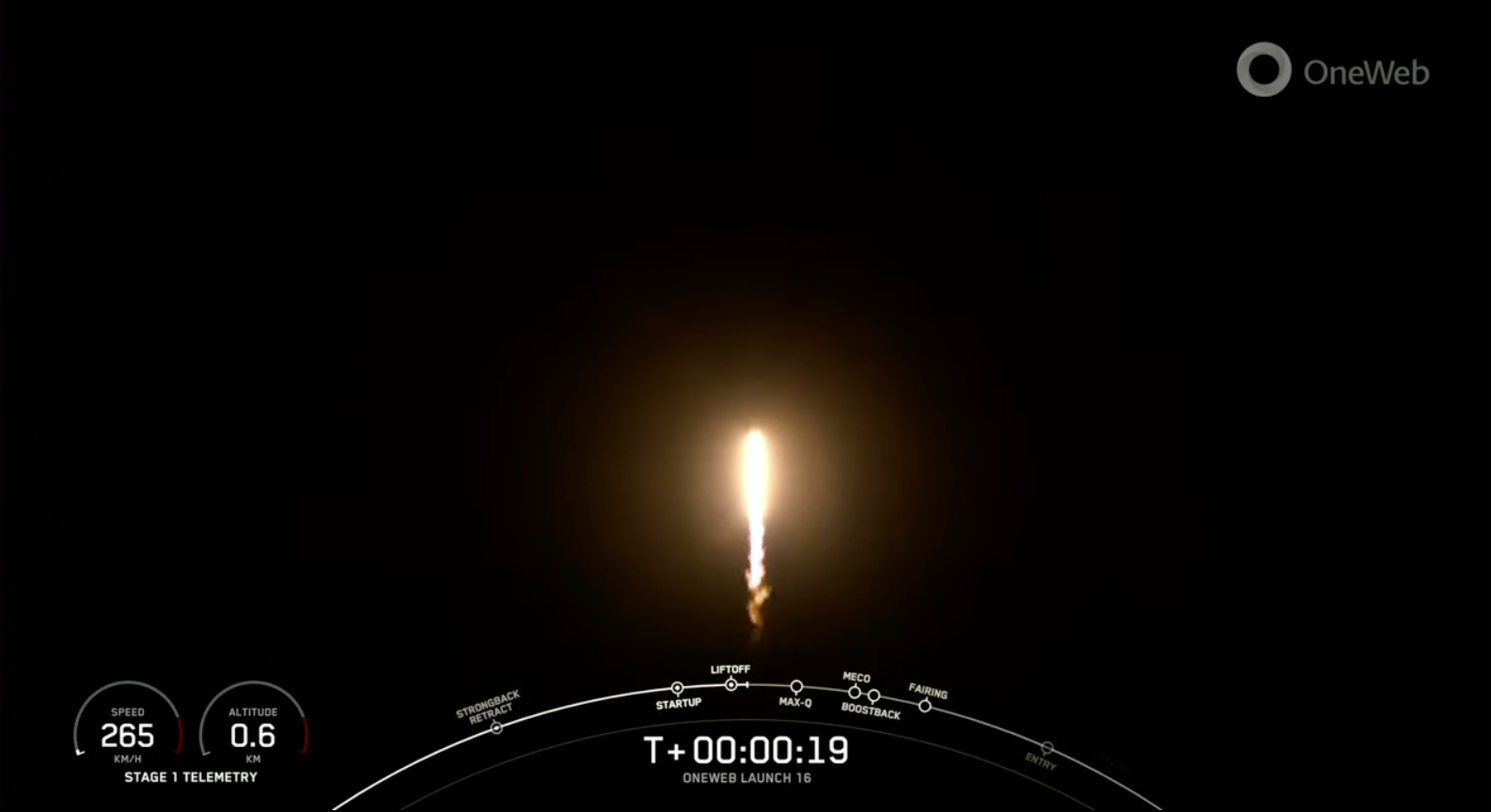
“High pressure is building back in and will anchor over the Gulf of Mexico for much of the week,” noted the 45th Weather Squadron at Patrick Space Force Base in a Monday morning update. “Dry conditions and northerly winds are expected throughout the day today, with winds shifting northwesterly tomorrow.
“Very little is expected in the way of cloud cover, with the exception of some shallow cumulus off the coast,” it added. “Little change for the backup window as conditions remain very favorable for launch.”
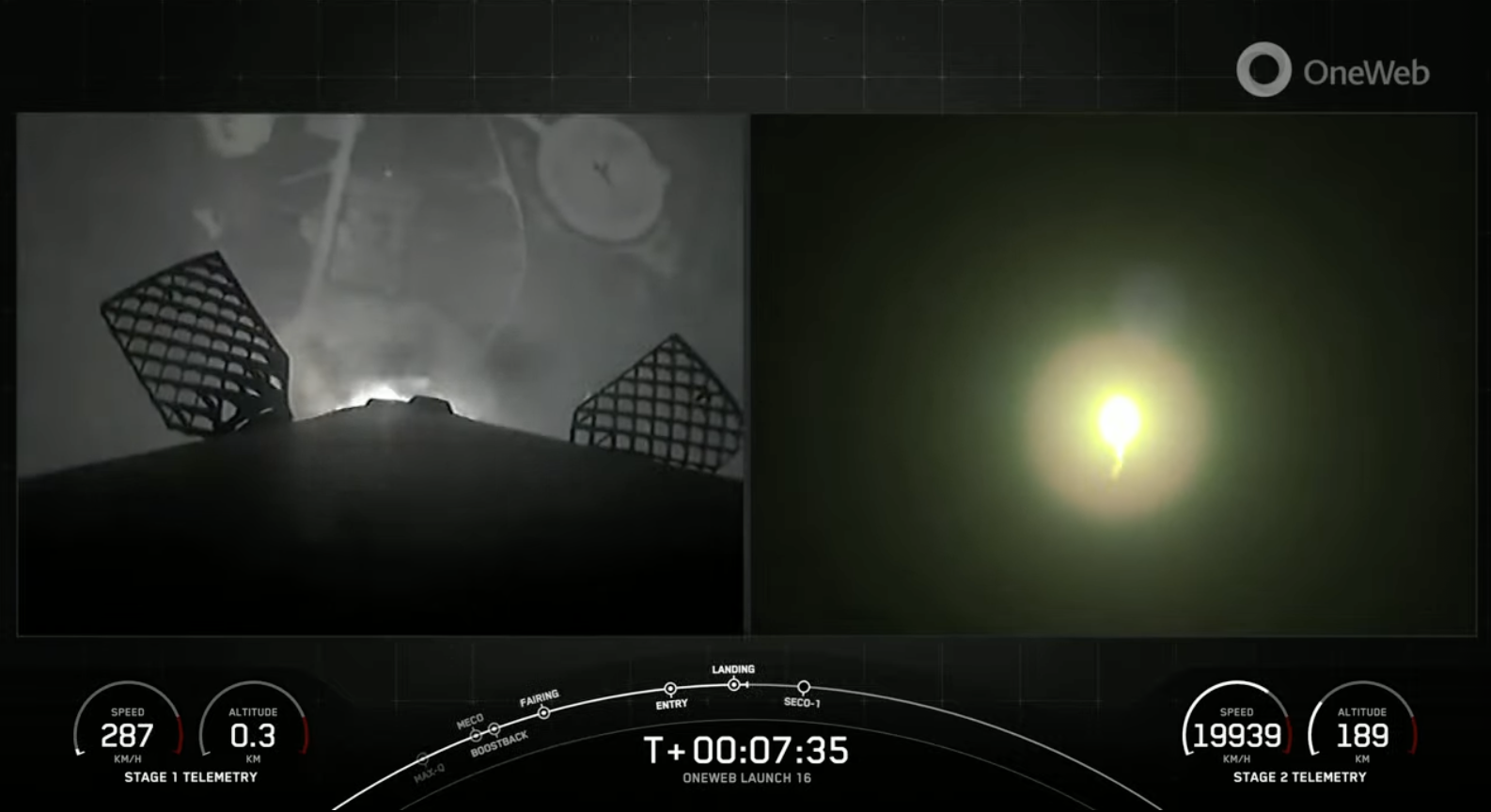
Without further ado, B1076 roared into the night at 11:50 p.m. EST, turning night into day across the slumbering Florida Coast. Eight minutes later, her job done, she pirouetted gracefully back home—aided by her hypersonic grid-fins and a carefully orchestrated symphony of Entry and Landing Burns from her Merlin 1D+ engine suite—to touch down on solid ground at the Cape’s Landing Zone (LZ)-1.
It marked the sixth time in a month, the second time so far in 2023 and the 37th successful “land” landing of a Falcon-class booster in 38 tries since December 2015. That total includes the synchronized touchdowns of twin Falcon Heavy side-boosters on no fewer than four occasions, most recently last 1 November.
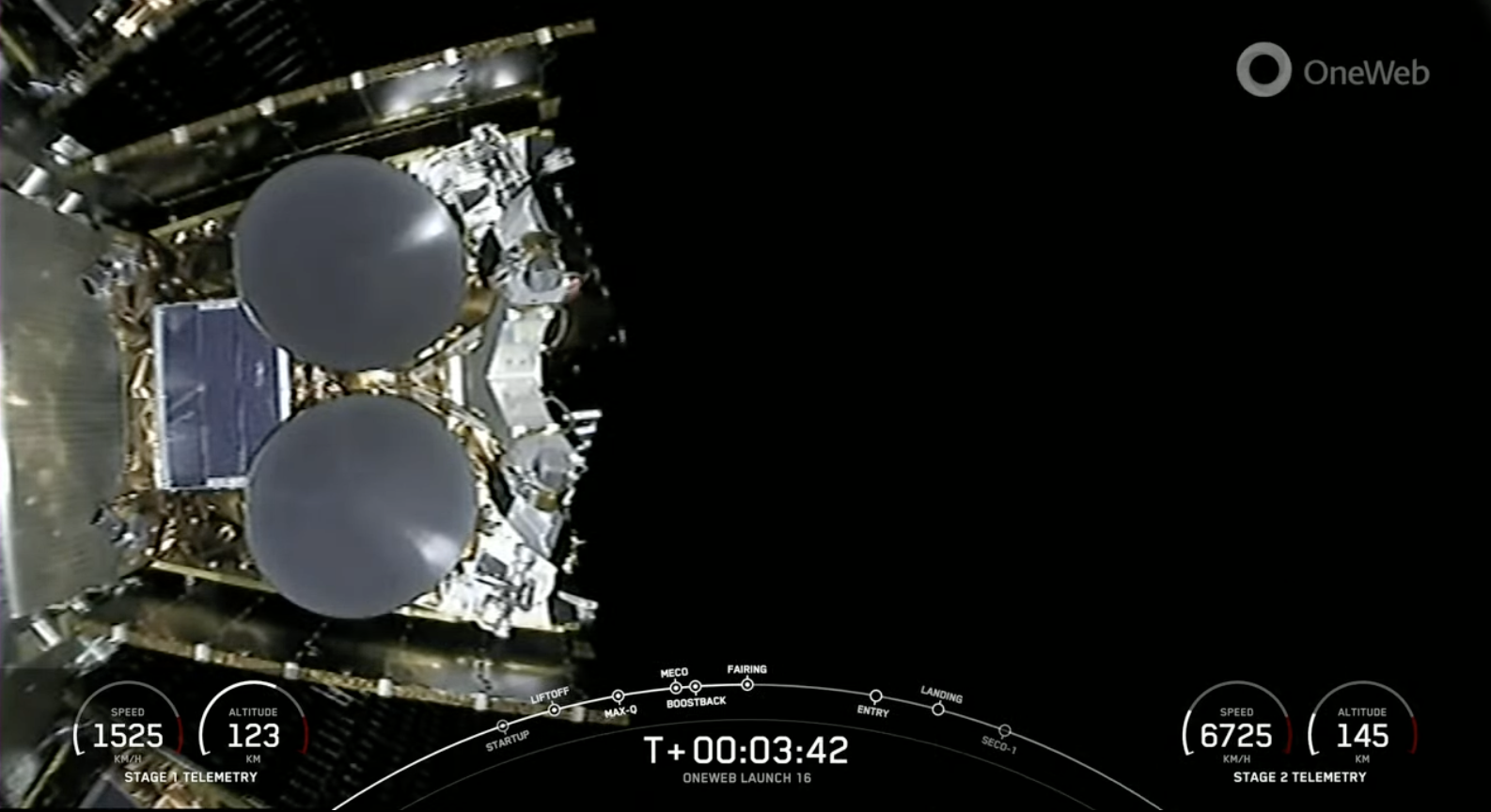
Following B1076’s return, the single Merlin 1D+ Vacuum engine of the Falcon 9’s second stage executed a customary six-minute “burn”, after which began a lengthy period of coasting, lasting some three-quarters of an hour. Then, departing two by two, at intervals ranging from a handful of seconds to a few minutes, the 40 OneWebs were deployed, with the final satellites released some 95 minutes into tonight’s mission.
Each satellite reportedly weighs in the region of 275 pounds (125 kilograms), roughly the same size as a household washing machine, and will reside at an orbital altitude of 750 miles (1,200 kilometers), inclined 86 degrees to the equator. All told, the stack aboard tonight’s mission totaled a little more than 13,000 pounds (5,900 kilograms).
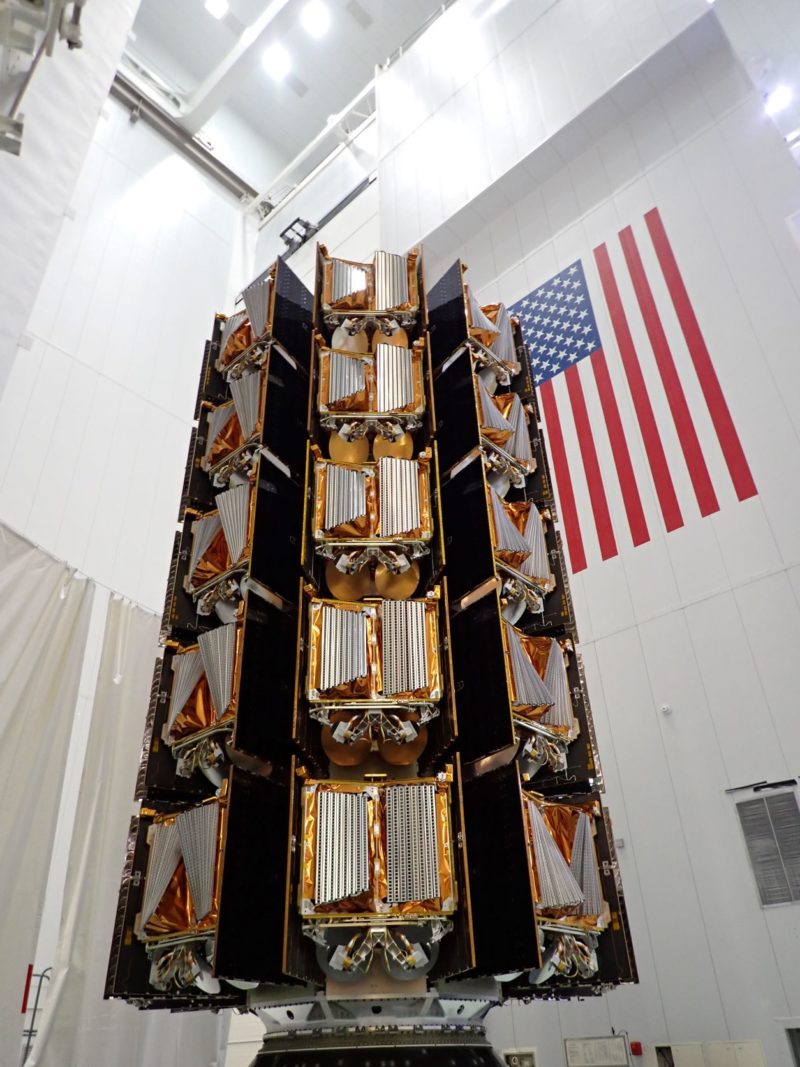
Thirteen batches of OneWebs flew between February 2019 and February of last year, delivering 428 satellites to orbit. That represented 66 percent of OneWeb’s first generation of 648 satellites and was achieved using Russia’s venerable Soyuz rocket, launched out of the Guiana Space Center in Kourou, French Guiana, Kazakhstan’s Baikonur Cosmodrome and the Vostochny Cosmodrome in the Russian Far East.
But following President Vladimir Putin’s invasion of Ukraine last spring, and a resultant raft of economic sanctions imposed by Western governments on Russia, OneWeb suspended six further launches out of Baikonur and sourced alternate launch providers. Last March, it contracted with SpaceX, then added New Space India Ltd., the commercial arm of the Indian Space Research Organisation (ISRO), to its expanding launcher portfolio in April.
Thirty-six OneWebs rode the first of two planned Indian Geosynchronous Satellite Launch Vehicle (GSLV) III boosters from the Satish Dhawan Space Centre in Sriharikota, Andhra Pradesh, for last October’s OneWeb Flight 14, raising the total number of satellites placed into orbit to 462. And last month, on OneWeb Flight 15, a Falcon 9 lifted 40 more satellites to space in the first of three SpaceX launches to be completed by later this spring.
According to OneWeb, tonight’s second batch of 40 SpaceX-launched OneWebs—designated OneWeb Flight 16—brings the constellation’s first generation to 542, some 80-percent complete. A definitive No Earlier Than (NET) date for the third Falcon 9 launch has yet to be announced, but is anticipated within 2023’s first quarter.






9 Comments
9 Pings & Trackbacks
Pingback:SpaceX Launches From Vandenberg, Busy Year Ahead for West Coast - AmericaSpace
Pingback:SpaceX Launches First 2023 Vandenberg Mission - Space News
Pingback:SpaceX Misses Monday Triple-Header, As Falcon 9 Launch Schedule Realigns - AmericaSpace
Pingback:SpaceX Misses Monday Triple-Header, As Falcon 9 Launch Schedule Realigns - Space News
Pingback:As SpaceX Lofts 40 OneWeb Satellites, Relativity Space Aims for Launch Attempt #2 on Saturday - AmericaSpace
Pingback:SpaceX Sets New Launch-to-Launch Record, Delivers SES-18/SES-19 Twins - AmericaSpace
Pingback:SpaceX Flies Hosted Mission for Intelsat & NASA, Heads for Year’s 25th Mission - AmericaSpace
Pingback:SpaceX Launches First Mission of May, Looks to Busy Month Ahead - AmericaSpace
Pingback:As Year’s 30th Falcon 9 Flies, SpaceX Scrubs Iridium/OneWeb Launch, Watches Ax-2 Weather - AmericaSpace